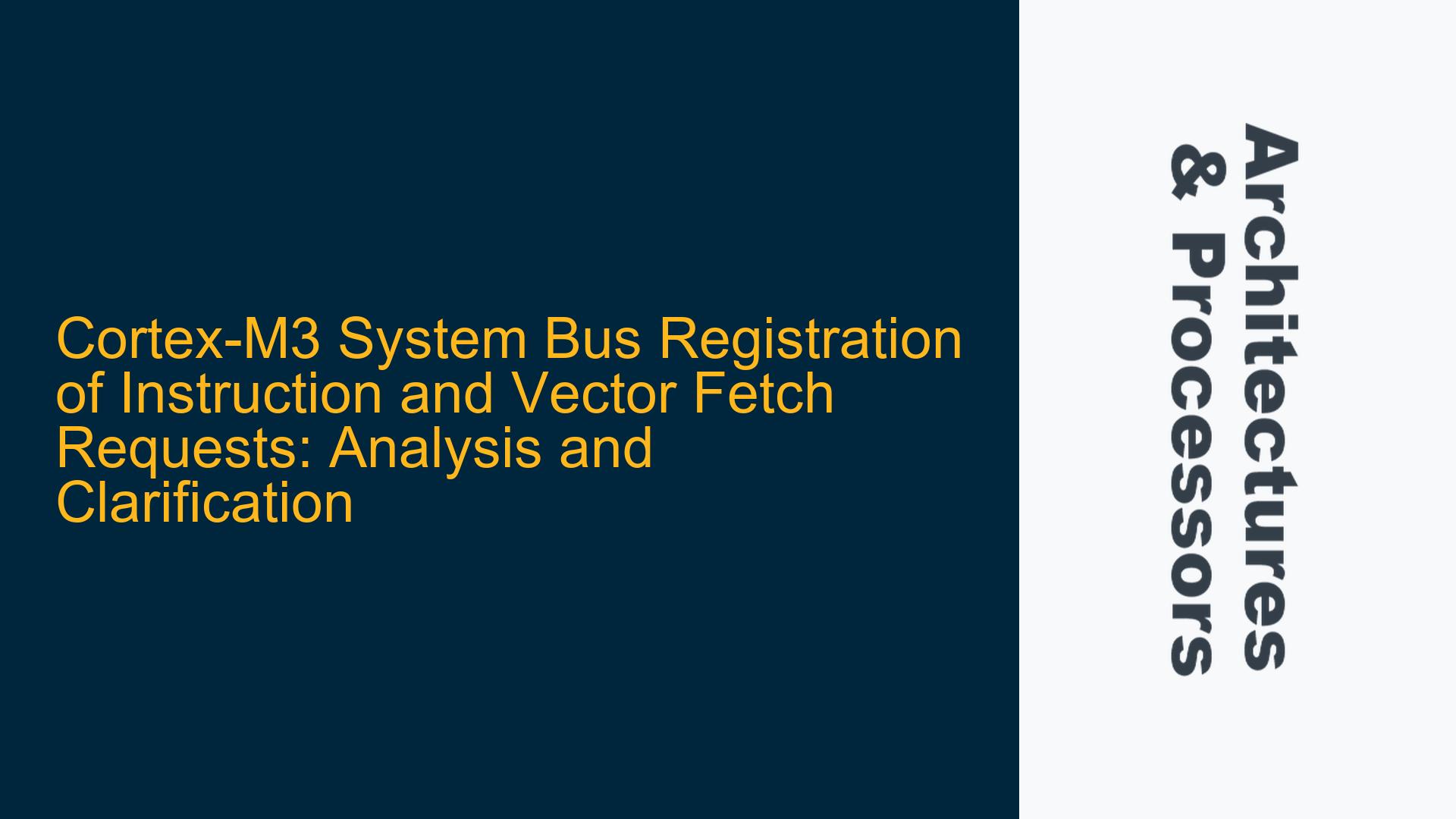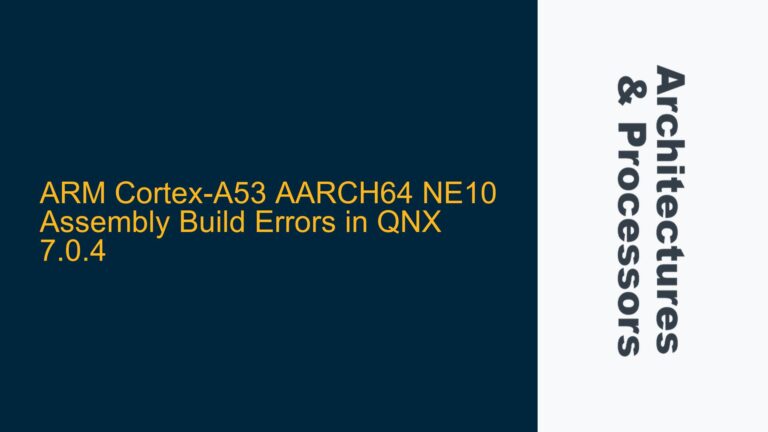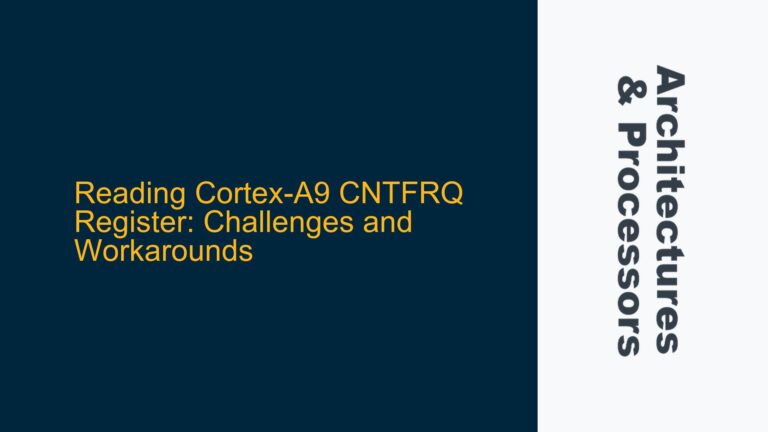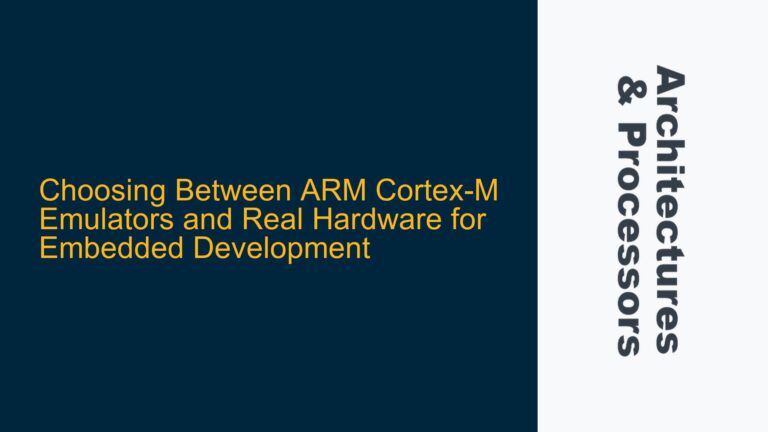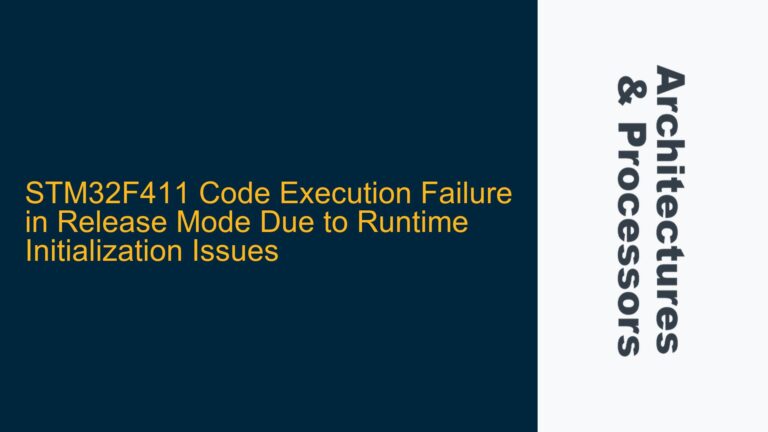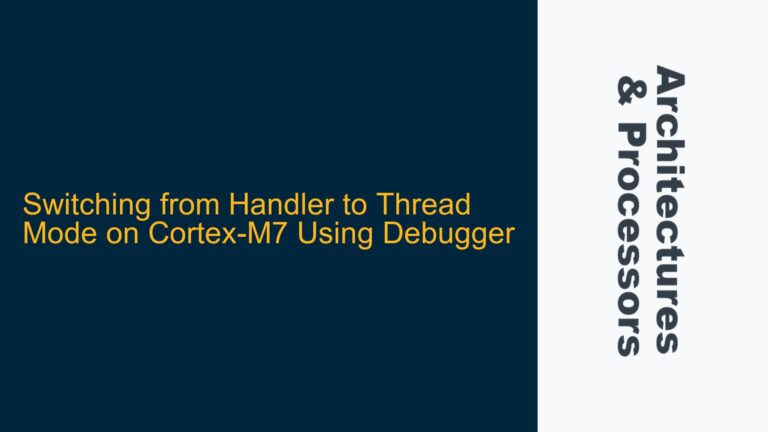Cortex-M3 System Bus Registration Mechanism for Instruction and Vector Fetches
The Cortex-M3 processor, a widely used ARM core in embedded systems, employs a system bus architecture that includes a registration mechanism for instruction and vector fetch requests. This mechanism is critical for ensuring proper timing and synchronization between the processor core and the memory subsystem. The registration process introduces an additional cycle in the fetch pathway, which can impact performance if not properly understood and optimized.
The system bus registration mechanism is designed to provide a clean timing interface by inserting a register stage in the fetch pathway. This register stage ensures that the address and control signals for instruction and vector fetches are properly aligned with the clock cycles of the memory subsystem. The registration process affects both the I-Code and D-Code interfaces, but the impact is more pronounced on the I-Code interface, which is primarily used for fetching instructions and vectors.
The registration mechanism involves the following key components:
- Address Registration: The address of the instruction or vector to be fetched is registered at the beginning of the fetch cycle. This ensures that the address is stable and properly aligned with the memory subsystem’s timing requirements.
- Control Signal Registration: Control signals, such as the fetch request signal, are also registered to ensure that they are synchronized with the address and the memory subsystem’s clock.
- Response Registration: The response from the memory subsystem, including the fetched instruction or vector, is registered before being passed back to the processor core. This ensures that the data is stable and properly aligned with the core’s internal timing.
The registration mechanism introduces an additional cycle in the fetch pathway, which can impact the overall performance of the system. However, this trade-off is necessary to ensure reliable operation and to simplify the implementation of the memory subsystem.
Impact of Address and Response Registration on Fetch Timing
The registration of address and response signals in the Cortex-M3 system bus architecture has a direct impact on the timing of instruction and vector fetches. The additional cycle introduced by the registration mechanism can lead to increased latency in the fetch process, which can affect the overall performance of the system.
When the processor core issues a fetch request, the address of the instruction or vector to be fetched is registered at the beginning of the fetch cycle. This registration ensures that the address is stable and properly aligned with the memory subsystem’s clock. However, this also means that the fetch request is delayed by one cycle, as the address must first be registered before it can be sent to the memory subsystem.
Similarly, the response from the memory subsystem, including the fetched instruction or vector, is registered before being passed back to the processor core. This ensures that the data is stable and properly aligned with the core’s internal timing. However, this also introduces an additional cycle of latency in the fetch process.
The impact of this additional latency can be mitigated by optimizing the memory subsystem and the fetch pathway. For example, using a high-speed memory interface or implementing a cache can help reduce the overall latency of the fetch process. Additionally, the Cortex-M3 processor provides several configuration options that can be used to optimize the fetch pathway, such as the ability to disable the registration mechanism in certain cases.
Optimizing Instruction and Vector Fetch Performance in Cortex-M3 Systems
To optimize the performance of instruction and vector fetches in Cortex-M3 systems, it is important to understand the impact of the system bus registration mechanism and to implement strategies to mitigate the additional latency introduced by this mechanism.
One approach to optimizing fetch performance is to use the I-Code interface for fetching instructions and vectors. The I-Code interface is specifically designed for instruction fetches and provides a more direct pathway to the memory subsystem, reducing the impact of the registration mechanism. By using the I-Code interface, the processor core can issue fetch requests directly to the memory subsystem, bypassing some of the additional cycles introduced by the registration mechanism.
Another approach to optimizing fetch performance is to implement a cache in the memory subsystem. A cache can help reduce the overall latency of the fetch process by storing frequently accessed instructions and vectors in a high-speed memory close to the processor core. When the processor core issues a fetch request, the cache can quickly provide the requested data, reducing the need to access the slower main memory.
In addition to using the I-Code interface and implementing a cache, there are several other strategies that can be used to optimize fetch performance in Cortex-M3 systems. These include:
- Configuring the Memory Subsystem: The memory subsystem can be configured to optimize the timing of fetch requests. For example, the memory subsystem can be configured to prioritize fetch requests over other types of memory accesses, reducing the overall latency of the fetch process.
- Using Data Synchronization Barriers: Data synchronization barriers can be used to ensure that fetch requests are properly synchronized with the memory subsystem. This can help reduce the impact of the registration mechanism and improve the overall performance of the fetch process.
- Optimizing the Fetch Pathway: The fetch pathway can be optimized by reducing the number of cycles required to issue fetch requests and receive responses. This can be achieved by using high-speed memory interfaces and minimizing the number of register stages in the fetch pathway.
By implementing these strategies, it is possible to optimize the performance of instruction and vector fetches in Cortex-M3 systems, reducing the impact of the system bus registration mechanism and improving the overall performance of the system.
In conclusion, the Cortex-M3 system bus registration mechanism for instruction and vector fetches is a critical component of the processor’s architecture. While it introduces additional latency in the fetch process, this trade-off is necessary to ensure reliable operation and to simplify the implementation of the memory subsystem. By understanding the impact of this mechanism and implementing strategies to optimize fetch performance, it is possible to achieve high-performance operation in Cortex-M3 systems.
